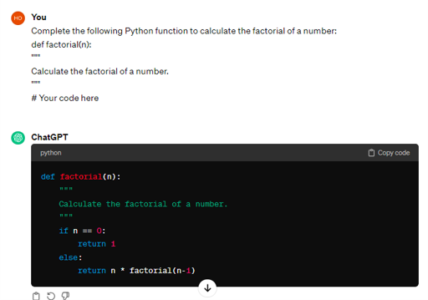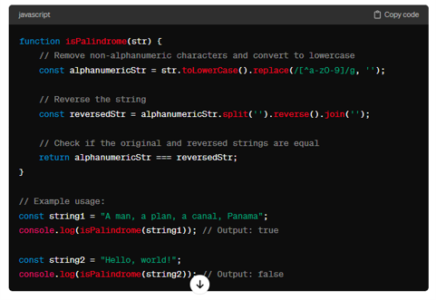Agentic AI Certification Training Course
- 4k Enrolled Learners
- Weekend/Weekday
- Live Class
Prompt engineering is an interesting field that combines artificial intelligence and human language understanding. In this field, professionals and researchers work to create prompts or instructions that effectively guide AI systems to produce the expected outcomes. Whether it’s fine-tuning language models, designing prompts for specific tasks, or optimizing human-machine communication, prompt engineering is crucial for leveraging the power of AI for a variety of applications. Are you eager to delve into the fascinating world of engineering but need help knowing where to start? Look no further than Prompt Engineering Tutorial – a meticulously crafted guide designed to take you on a journey from novice to expert.
Prompt engineering is a method used in natural language processing (NLP) and machine learning. It’s all about crafting clear and precise instructions to interact with large language models like GPT-3 or BERT. These models can generate human-like responses based on the prompts they receive.
Think of prompt engineering as giving directions to these models. By crafting specific and concise prompts, we guide them to produce the responses we want. To do this effectively, we need to understand the capabilities of the model and the problem we’re trying to solve.
Fine-tuning prompts allows researchers and developers to improve the performance and usability of LLMs for a variety of applications, including text generation, question answering, language translation, and others. Effective prompt engineering necessitates a thorough understanding of the underlying model’s capabilities, as well as the problem domain and desired results. Our Prompt engineering tutorial explains importance of prompt engineering for AI.
Prompt engineering is important in AI because it improves model performance, customization, and reliability. By creating clear and tailored prompts, developers can help AI models produce more accurate and relevant results, reduce biases, improve user experience, and address ethical concerns. In simple terms, prompt engineering ensures that AI systems produce useful and reliable results that meet the needs of users while adhering to ethical principles.
Let’s consider an example in the context of text generation, for generating product descriptions:
Assume you’re using an AI model to create product descriptions for an online store. Without prompt engineering, you may issue a generic prompt such as “Generate a product description for a smartphone.
Without Prompt Engineering you would get something like this:
Input: “Generate a product description for a smartphone.”
Output: “This smartphone has a high-resolution display, powerful processor, and long-lasting battery life.”
The Given prompt is less effective because it lacks specificity. It simply says “Generate a product description for a smartphone.” This may make it difficult to come up with ideas and write something engaging and informative. So, having good prompts can make a significant difference in your writing! They give you a clear idea of what you need to write about and keep you focused and organized, making it easier to generate ideas and express yourself.
On the other hand, by using prompt engineering techniques, you can provide more specific instructions or constraints that will tailor the generated descriptions to the target audience or brand style.
With Prompt Engineering:
Through this example we understood that prompt engineering enables the creation of a product description that is useful to the target audience and highlights specific features based on the instructions provided. This shows how prompt engineering can improve the importance and effectiveness of AI-generated content for specific applications. Lets move on to next topic of prompt engineering tutorial.
To help AI models give accurate answers, it’s important to create clear prompts. Here are some simple Rules for generating effective prompts:
Example:
Unclear prompt: “Write about cars.”
Clear prompt is: “Write a description of a red convertible sports car.
Example:
Prompt without context: “Write a story.”
Prompt with context: “Write a story about a girl who discovers a magic book in her attic.”
Example:
Prompt without examples: “Describe a beach scene.”
Prompt with examples: “Describe a beach scene with palm trees, crashing waves, and people playing volleyball.”
Example:
Long prompt: “Write a detailed essay discussing the impact of climate change on biodiversity and ecosystems in tropical rainforests.”
Short prompt: “Write about climate change’s effects on rainforests.”
Example:
Biased prompt: “Write about a woman who struggles with her weight.”
Unbiased prompt: “Write about a person overcoming challenges.”
Example:
Prompt without limits: “Write a story.”
Prompt with limits: “Write a story set in a haunted house, with a maximum word count of 500 words.
Dive into the intricate world of prompt engineering techniques within our comprehensive prompt engineering article, and unlock the secrets to optimized code generation.
Related Post: Behavior of AI models during prompt execution
Here are some examples of prompts for generating text using ChatGPT in our prompt engineering tutorial.
Text Generation:
For text generation tasks, prompts usually consist of a textual instruction or starting point that directs the model to produce coherent and relevant text. Prompts can be story prompts, questions, or incomplete sentences. Text generation prompts provide context and direction to the model, allowing it to generate human-like text responses. They influence the generated text’s tone, style, and content.
Prompt : “Write a short story about a character who discovers a hidden treasure.”




By specifying the source and target languages in the prompt, along with the input sentence, the model is instructed to perform a precise translation task, ensuring accurate language conversion.
Code Generation:
Code generation prompts are usually partial code snippets or descriptions of programming tasks. They specify the desired functionality or behavior that the model should show. Code generation prompts allows the model to generate code that satisfies specific programming requirements, such as implementing algorithms, defining functions, or solving coding problems.
Prompt: “Complete the following Python function to calculate the factorial of a number:”
def factorial(n):
“””
Calculate the factorial of a number.
“””
# Your code here

By presenting an incomplete code snippet along with clear instructions, the model is directed to suggest appropriate code completions, helping developers write code more efficiently.
Example2:
Prompt: “Develop a JavaScript function capable of determining whether a provided string is a palindrome or not.”

Now moving on to the Text to image generation using DALL·E or CLIP and here is an example of prompts for generating image.
Text to image generation:
Image generation prompts specify the visual scene, object, or concept that the model should generate. They may include textual descriptions, keywords, or images. Image generation prompts allows the model on what visual content to generate. They influence the generated images’ composition, style, and details.
Prompt: “Imagine a tree where the branches are made of stacks of books. Can you paint me a picture of that?”

Generated Image:

Example 2:
Prompt: “Picture a cloud in the sky that looks like a huge heart. Can you draw that for me?”

Generated Image:

Generating imaginative images is now easier than ever.
These AI tools leverage prompt engineering techniques to generate text, perform language translation, code autocompletion, and text-to-image generation, demonstrating the versatility and power of prompt-based interaction with AI models. Moving on to next part of this prompt engineering tutorial.
Machine learning is very helpful in prompt engineering, especially in linguistics and language models, because it helps create better prompts and interactions by analyzing lots of data and finding patterns.
Generating Relevant Prompts: Machine learning models can suggest or generate prompts based on input data and user preferences. These prompts can be tailored to specific tasks, domains, or user requirements, making them more useful and effective for guiding language models.
Optimizing Prompt Design: Machine learning techniques can be used to optimize prompt design by comparing the performance of various prompts and selecting the ones that produce the best results. This iterative process improves prompt engineering practices and the overall performance of language models.
Personalizing Interactions: Machine learning enables personalized interactions by creating prompts to individual users’ preferences, history, and context. This personalization increases user engagement and satisfaction with language model interactions.
Improving Model Performance: Machine learning algorithms can be used to fine-tune language models based on prompt-response pairs, increasing their performance and accuracy over time. Language models can be trained on a variety of datasets and prompts to produce more relevant and contextually appropriate responses.
Mitigating Bias and Misinformation: Machine learning techniques can help identify and mitigate preferences in prompt engineering by examining prompt-response pairs for potential biases or inaccuracies. Language models can produce more fair, inclusive, and reliable results by detecting and correcting for preferences.
This concludes our prompt engineering tutorial. I hope I have clearly explained what prompt engineering is and why it’s important for AI. If you’re interested in further training in prompt engineering, consider enrolling in the Prompt Engineering Course with Generative AI offered by Edureka. This course is expertly curated by top industry professionals to unlock the vast potential of artificial intelligence.
If you have any questions, please feel free to mention them in the comments section, and we will respond promptly. Check out our Prompt Engineering Resources
Related Post:
 Thank you for registering Join Edureka Meetup community for 100+ Free Webinars each month JOIN MEETUP GROUP
Thank you for registering Join Edureka Meetup community for 100+ Free Webinars each month JOIN MEETUP GROUPedureka.co